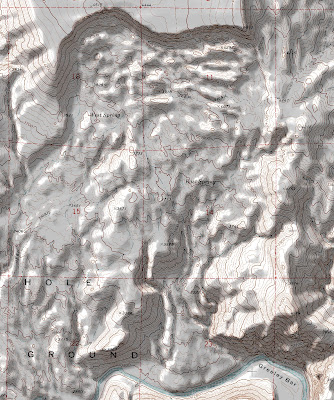This was a 'choice' sample location in terms of sediments and stratigraphic position. This is not too high above the river on river right, well below the top of the West Crater flow. It remains to be seen as to whether this is lacustrine sediment associated with the West Crater Dam. If so, these sediments provide a constraint on the paleo-profile at the time (and place it lower than I would have suspected). Upper photo shows where we sampled and also the location of the tephra bed higher in the section (the white line with some obvious digging disturbance). The lower photo shows the exact sample spot at the base of the exposure. Sample 10050704. This is the stratigraphically lowest sample. This sample is in the top tier of priority for analysis because it seems like an ideal case.



















